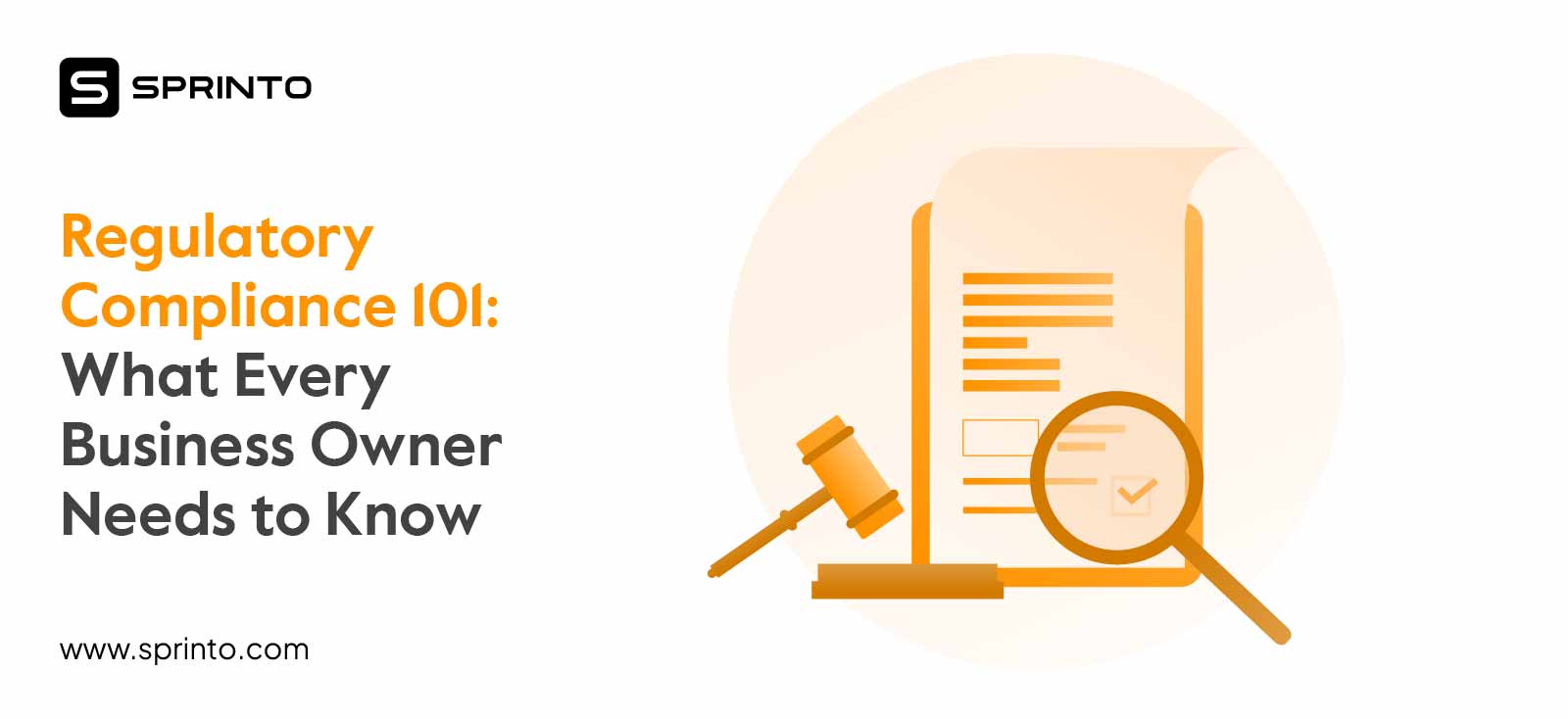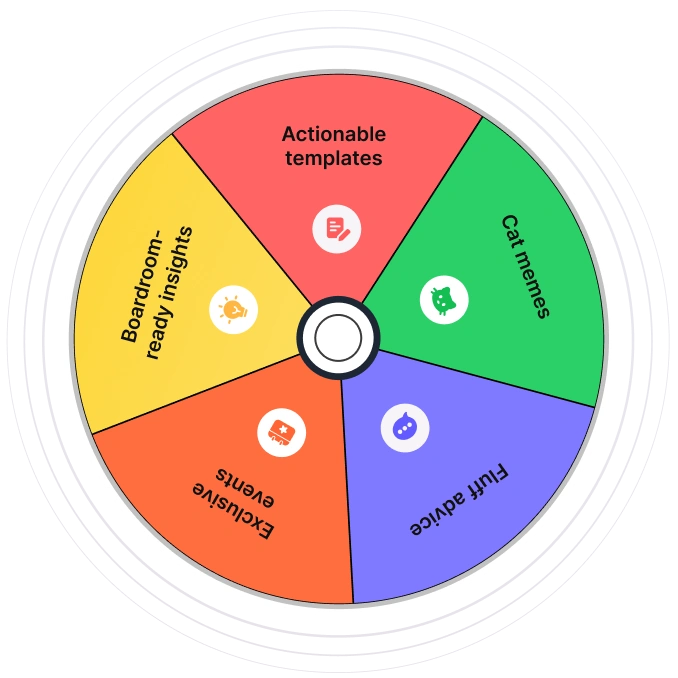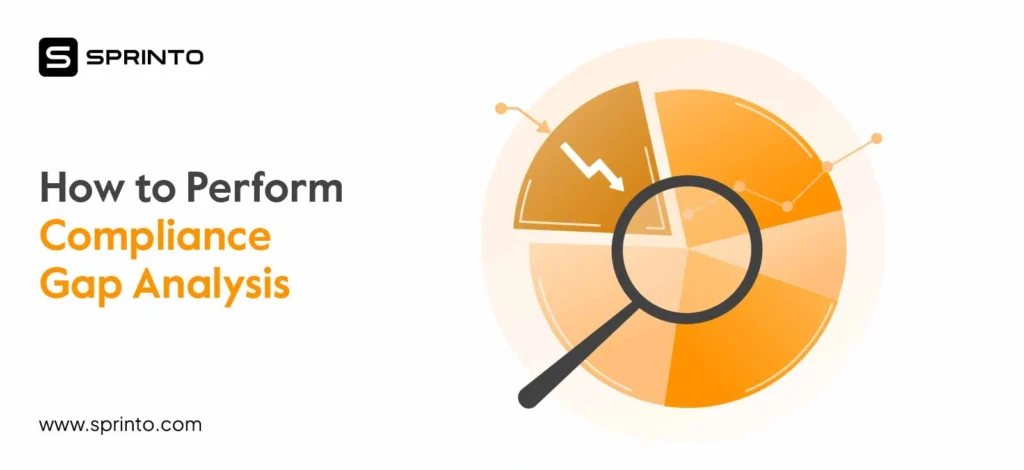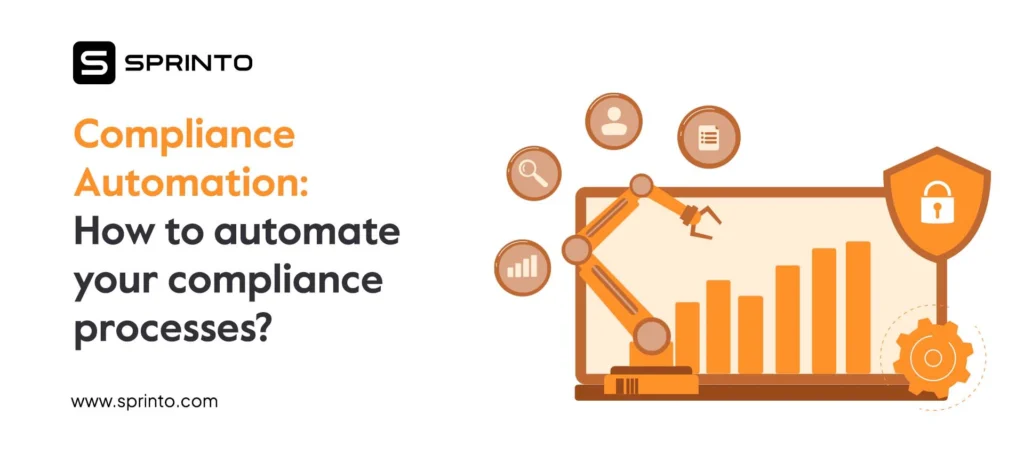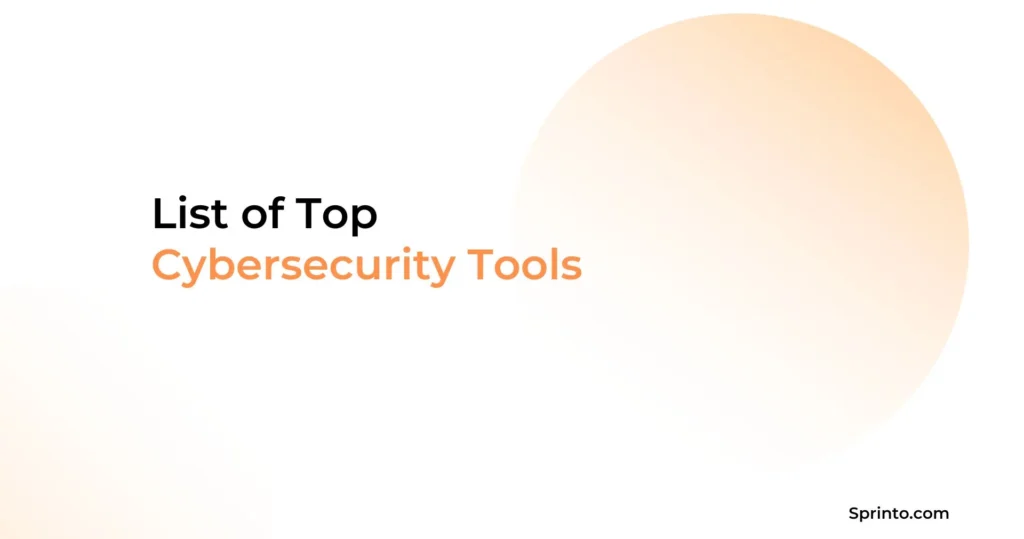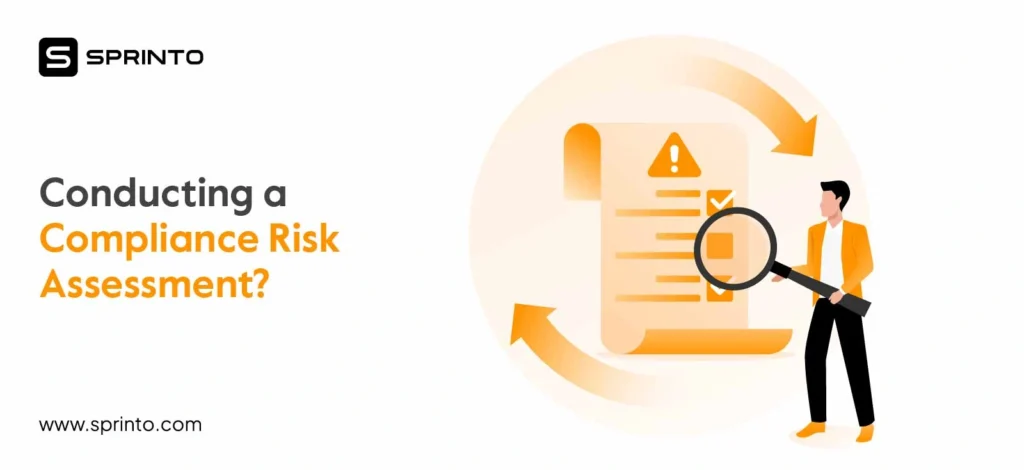Sometimes, a region’s regulatory compliance rules can prevent businesses from entering a new market. This was the case with Threads, Meta’s new social media platform. This uncertainty arose when it failed E.U.’s Digital Markets Act, which has rules about sharing user data across different platforms.
This issue sets the stage for what we’re diving into in this blog.
From creating products to securing funds, entrepreneurs starting their businesses have their hands full. And while compliance and risk management may not grab the spotlight, it matters for a wide range of business processes. It’s vital to ensure the legality of your operation. Brushing compliance aside could result in hefty fines, legal skirmishes, and reputational damage.
This blog will help you understand the meaning of regulatory compliance and how to sidestep vital issues to maintain a favorable standing.
- Compliance Must Be Continuous & Automated: Manual compliance is error-prone and inefficient—sprint toward real-time monitoring, evidence collection, and audit readiness with automated workflows.
- Get Proactive, Not Reactive: Continuous control monitoring, smart alerts, and real‑time dashboards help you preempt risks—even as regulations evolve—rather than scrambling last‑minute
- Sprinto Delivers Scalable Automation: Sprinto integrates with your cloud, HR, and security stacks. That’s how it reduces manual effort, and lets teams achieve compliance with SOC 2, ISO 27001, HIPAA, PCI DSS faster.
What is regulatory compliance?
Regulatory compliance refers to a collection of legal requirements and privacy regulations that organizations must follow to safeguard sensitive information. Compliant organizations will have strong data governance in the form of a system of rules, policy documentation, and decision-making and process control structures. These governance pillars ensure security and standardization in how an organization manages data. Compliant businesses will also have strong monitoring practices to ensure enforcement, and evidence documentation practices to offer transparency and proof of compliance. It’s important to note that any company managing data, digital assets, or health protocols falls under regulatory compliance.
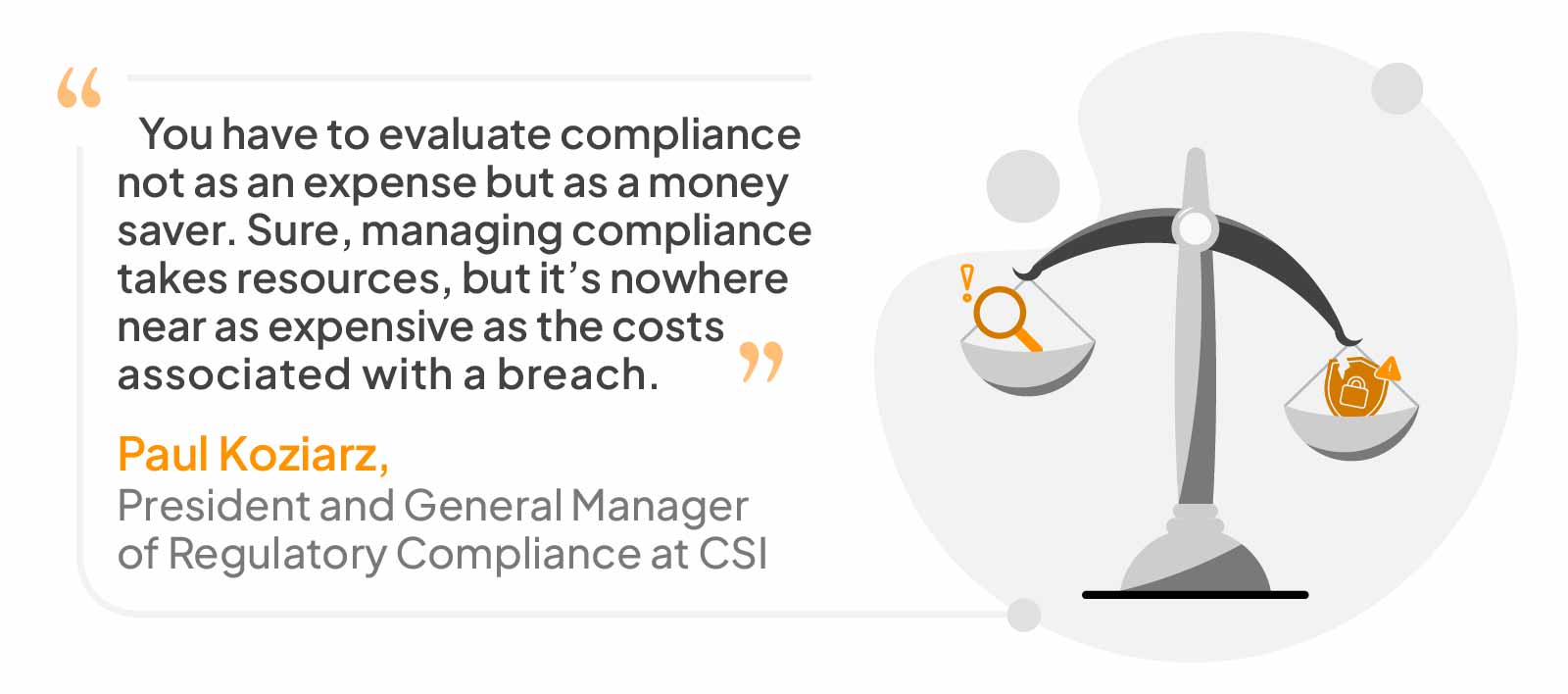
Subscribe to get top-tier insights straight to your inbox!
Industries like tech, finance, and healthcare are more heavily regulated with regard to compliance standards because they directly impact the economy.
Benefits of regulatory compliance
There are numerous benefits to achieving regulatory compliance, from reducing potential data breaches to improving your brand reputation. It is also the first step towards stronger risk management, which becomes crucial as you grow. Here are some other key benefits:
- Data security: Compliance frameworks provide companies with a structured way of protecting sensitive data from risks that may vary in nature. The data fencing carried out as part of regulatory compliance protects it from viruses, hackers, physical stealing, and any unintended loss.
- Mitigate risks: A strong compliance framework incorporates risk management in many ways. For instance, security training makes every employee more vigilant. Vendor risk checks ensure that your vendors do not become a backdoor into your org’s infrastructure.
- Enhances your reputation: Being compliant helps the organization to gain customers’ and stakeholders’ trust. For instance, customers would have a harder time trusting a health or healthtech brand that is not HIPAA-compliant.
- Gain access to more opportunities: Obtaining regulatory compliance can grant access to more attractive opportunities that would be difficult to secure otherwise. Compliance allows you to enter new markets and target new customers.
Want to see how this plays out on the ground? Explore How Sprinto helped Dassana launch a compliance program that helped them get ready for their SOC 2 audit in just 3 weeks.
Fastrack your regulatory compliance through automation
Why is regulatory compliance important?
Regulatory compliance is important because it is critical to mitigating potential cyber risks, including security breaches and data loss.
Regulations are moving targets. They keep changing and evolving. When you think you’re done with your compliance exercise, something inevitably shifts, and you need to readjust your game plan to stay in the clear. So, your business needs to be nimble, or you risk leaving it vulnerable.
This constant change is what makes regulatory compliance so challenging.
Not meeting compliance efforts makes your business vulnerable to potential lawsuits and financial troubles. In fact, a study on cyber breach cases in the U.S., U.K., and Canada found that both the number of cases and the total losses associated with them are on the rise. The average cost per case jumped nearly two-thirds in just one year, from $4.4 million to $7.2 million.
Hence, compliance isn’t just a box to check; it’s vital to safeguard your business from potential harm and maintain a strong, trustworthy image in the eyes of your customers and regulators.
Industries and functions that must adhere to regulatory compliance
Any industry needs to stay on top of specific regulatory compliance requirements. It might be legal, operational, or related to cybersecurity. Here are some of the types of industries and their regulatory compliance procedures to give you an idea of what you can expect:
Healthcare providers’ regulatory compliance
Regulatory compliance in healthcare (and that includes you if you’re a healthtech servicing customers or healthcare organizations) is a collection of processes and steps that help a healthcare company stick to national or state laws, industry-specific regulations, or even agreements between private companies
- The Social Security Act manages Medicare, Medicaid, and CHIP
- HIPAA and the HITECH Act safeguard patient privacy, ensuring healthcare providers preserve patient information
- The Patient Protection and Affordable Care Act covers insurance rules, including Medicaid
- The Department of Health and Human Services and the Office of the Inspector General jointly prevent fraud
Corporate regulatory compliance
Corporate compliance involves following a company’s rules, applicable regulations, procedures, and behavior standards. This type of compliance isn’t limited to internal policies and procedures but extends to federal and state laws governing business operations.
So when you enforce and maintain corporate compliance, your company can ensure that everyone within it is following the rules. This, in turn, helps prevent and detect any violations or misconduct in your compliance activities.
Must read: What Does A Compliance Manager Do?
Cybersecurity regulatory compliance
Cybersecurity regulatory compliance includes a set of directives to ensure the security of IT and computer systems. These regulations play a crucial role in compelling companies to protect their systems and data against various cyber threats, including viruses, worms, Trojan horses, and phishing attempts orchestrated by malicious actors.
Federal Government Regulations
- Health Insurance Portability and Accountability Act (HIPAA)
- 1999 Gramm-Leach-Bliley Act,
- 2002 Homeland Security Act, which includes Federal Information Security Management Act (FISMA)
State Government Initiatives
Complementing federal regulations, individual U.S. states have come up with measures to address cybersecurity concerns. The first such example was California’s enactment of the Notice of Security Breach Act in 2018, and more recent examples include the Texas Data Privacy and Security Act (TDPSA).
Human resources compliance
Simply put, human resources compliance is a set of rules and standards that guide how a company plans and manages its human resources. These rules set the gold standard for how HR should be done, and they need to be in sync with the company’s overall goals and compliance process. Human resources managers often become the custodians of compliance. They handle important areas such as
- Employment Laws: These cover family leave, fair wages, discrimination prevention, age discrimination, harassment, and disability accommodations
- Employee Health and Safety: They deal with workplace safety (OSHA) and employee well-being
- Hiring and Firing: This includes managing labor relations, unions, and immigration laws
Check: Compliance Training: Essential Skills for Regulatory Adherence
Compliance for banking
In simple terms, banks must create policies and practices that match the rules they need to obey. These rules stem from different regulatory bodies, such as local government laws, international regulations, and compliance measures set by financial regulatory agencies at a local or international capacity. A good compliance program will:
- Train employees about rules and make them accountable
- Has strategies to tackle compliance risks
- Provides enough staff and tools for compliance tasks
Financial services compliance
Financial services compliance includes a set of rules, regulations, and guidelines that financial institutions, fintech companies, and capital markets must adhere to to ensure that they operate lawfully and ethically.
- Common Reporting Standard (CRS): For financial institutions in certain countries to counter tax evasion, excluding the U.S.
- Consumer Laws: Home Mortgage Disclosure Act, Truth In Lending Act, and more
- Cybersecurity: Deals with preventing cyberattacks, with laws dictating how to handle data breaches. Laws like the Sarbanes-Oxley Act and PCI-DSS ensure customer data stays safe
- Financial Crimes Prevention: Covers money laundering, insider dealing, fraud, and more. Having these policies shows commitment to deter such acts.
Also check out: Guide to Cloud Security Compliance
Steps to implement regulatory compliance
Implementing regulatory compliance from scratch is a big step that requires a significant amount of planning and execution. A good compliance program can showcase your business’s acknowledgment of its legal responsibilities and commitment to diligently fulfilling them.
Here are the 9 steps to implement the regulatory compliance process:
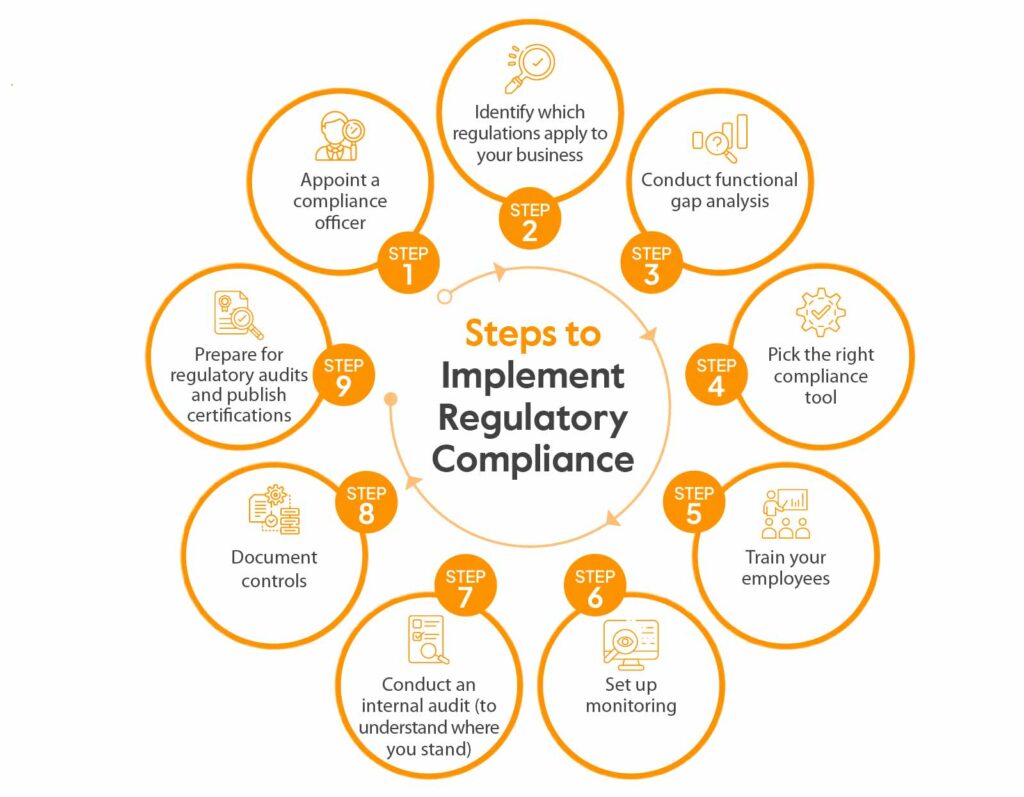
Appoint a compliance officer
Appoint an external compliance officer to take care of your compliance needs or have someone from your internal team shoulder the responsibilities that come with the role. A compliance officer acts as the POC for all compliance-related activities and as a spokesperson for the organization when communicating and liaising with external stakeholders for compliance activities.|
A compliance officer is usually appointed internally, depending on the size of the organization and the availability of skilled personnel. CEOs, CTOs, Heads of engineering, and CISOs usually wear this hat.
Identify which regulations apply to your business
First, identify all the regulations related to your organization. These regulations can stem from different levels, ranging from federal and state to local authorities, or may apply exclusively to your industry or region. They are most likely legally binding as well.
Here are some key factors you must consider:
- Client base: The types of clients you serve have a say in the regulations you must comply with. For example, if your clients mainly use cloud assets to store their data or their business deals with software, they have to comply with SOC 2 or ISO 27001 (these are not mandatory, though).
- Industry: Which industry you work in will also majorly influence what regulations apply to you. For example, if you are in the banking industry in the USA, you need to follow the U.S. banking regulations like The Bank Secrecy Act and adhere to standards like PCI DSS.
- Products: The nature of your products will introduce specific compliance requirements. For example, if you operate in the healthcare or healthtech industry, you must comply with HIPAA or HITRUST
- Location: Where your business is physically located will influence the regulations you need to stay in tune with. For example, if your business is in California, you must comply with CCPA regulations.
Conduct functional gap analysis
Gap analysis is an assessment of your company’s current cybersecurity measures and practices compared to its desired or required level of security. The idea is to find where you’re lacking, weaknesses, and places where you don’t meet security rules and standards.
For example, financial processes might be inefficient in small businesses, so it’s a good place to start your analysis regularly. When doing this analysis, ask yourself some important questions:
- Do you train your staff to keep them updated on the latest security threats?
- Do you have standard procedures and approvals in place before making changes? And, just as important, do you plan to undo those changes if something goes wrong?
- When it comes to granting access to new hires or removing it for those who leave, how do you handle that?
Manually handling these tasks to get compliant takes too much time. That’s why Sprinto simplifies conducting gap analysis by automating up to 90% of your gap analysis process to help you simplify regulatory compliance.
Pick the right compliance tool
Compliance management software helps you follow your company’s internal rules, legal requirements, and industry standards. This way, you don’t have to face problems due to non-compliance; manual effort is just too trying.
However, choosing the right tool makes all the difference, as it will be responsible for 99% of your uptime. Below are some of the tasks that a compliance automation tool can do:
- Automate tasks related to compliance
- Create and manage documentation, policies, and protocols
- Address issues related to risk management
- Ensure your policies and procedures meet all the necessary laws and regulations
Also, a typical compliance management software comes with various features like risk assessments, policy management, training management, audit trails, and any aspect of compliance.
Sprinto is a real-time compliance automation software that keeps a watchful eye on your compliance activities. It even alerts you when controls fail, so you stay on top of things.
For example, let’s say your employee failed to complete HIPAA training on time. Sprinto sends a notification to the respective person to complete the training.
Recommended: How to set up a compliance management system
Train your employees
Without a doubt, training your employees is one of the most important requirements. Frameworks like HIPAA and GDPR require companies to train their employees so that when security incidents occur, they know exactly what to do and when to do it. This helps keep employees aware of their responsibilities and ensures they can confidently carry out their roles in line with internal policies. Basic training can be carried out online through webinars or on-the-job exercises.
However, to make this task easier, Sprinto supports the training of employees with various modules that can be scheduled and monitored within the platform. Here’s how. Admins will periodically send out training requests. Employees receive notifications that will prompt them to complete the required modules within a set time frame.
Note
Are you curious about the latest developments in regulatory compliance? Click here to explore our newsletter, where you’ll discover handpicked GRC content offering practical insights for your everyday needs.
Set up monitoring
When you focus on compliance only once in a while, it can lead to a last-minute rush, scrambling to perform control tests, patching tasks, and hoping for no unexpected issues. This is why we urge you to set up continuous compliance monitoring as a part of your process.
The manual approach to compliance can be stressful and risky. However, having a compliance automation solution like Sprinto can save you significant time and effort. It connects with your systems, constantly monitoring controls against regulatory compliance standards like GDPR or HIPAA. It runs compliance tests, gathers evidence, and intimates security teams when controls fail, ensuring you have enough time to initiate corrective steps and keep your compliance program in check all year round.
Here’s how Sprinto helps:
Sprinto’s continuous control monitoring informs your company of your compliance status, while automated workflows ensure complete coverage.
The interesting part is that Sprinto provides tailored dashboards that present real-time information. This helps you take immediate action and prevent lapses in compliance and potential fines.
Conduct an internal audit
Conduct an internal audit to view your current regulatory compliance standing and assess how aligned you are with compliance requirements. This process helps identify operations that may have gaps or potential risks. The goal is to ensure you’re on the right track and understand where improvements are needed to align more closely with regulatory compliance requirements. This will help you stay in sync with the ever-changing compliance updates, reducing the likelihood of costly issues down the road.
For each of your compliance obligations, here’s what you should be assessing:
- Alignment with legal: Are your internal processes in sync with the legal requirements relevant to your business?
- Employee awareness: Do your staff members clearly understand the rules your business must abide by? Are they working by these rules?
- Documentation: Do you have accurate and up-to-date documentation that outlines how you maintain ongoing compliance?
Sprinto’s dashboard makes it easy to keep track of the results from internal audits in real time. Once you add all necessary data, the dashboard tracks controls that pass and fail the set parameters. This ensures your security measures meet compliance standards while streamlining the audit process.
Document controls
Documenting controls in your compliance journey ensures there is an auditable log of every control deployed, organizational changes implemented, administrative protocols in the system, and more. These logs also double up as evidence of compliance when an auditor reviews the internal systems of an organization during a compliance audit.
Prepare for regulatory audits and publish certifications
Now, the last step is to prepare for the audit based on the regulation you choose to adhere to. But before that, as you prepare for the audit, be ready to present the auditor with evidence. They may inquire about various aspects of your organization’s practices, such as employee background verification, code review processes, access management, and endpoint security, among many other functions.
Sprinto has a network of auditors, and you can connect with one of them based on your requirements. Once the audit result is out, you can demonstrate it to the public with the help of Sprinto’s Trust Center feature.
The Sprinto Trust Center provides a personalized portal that allows auditors to access control status, checks, and evidence for the period and compliance framework in focus.
Interestingly, you can bring in control information and display the real-time status of the security and privacy controls you’ve chosen on your page. And just like that, you’ve published your certifications for the world to see.
Differences Between Regulatory Compliance and Security Compliance
Regulatory compliance and security compliance are both vital but for a wide range of reasons. Security deals with reducing business risks, while regulatory compliance deals with legal and regulatory requirements. Their objectives are similar—managing risks and securing data but their methods differ.
| Security compliance | Regulatory compliance |
| Security involves using technical measures to shield digital assets from cyber threats | Regulatory compliance means following rules created by the government or regulatory bodies to reach satisfactory inspectional outcomes. |
| Safeguards company assets (IT) | Safeguards business activities |
| Fills security gaps, reduces risk, and preserves reputation | Minimizes risk of penalties and preserves reputation |
Examples of regulatory compliance
Now that you know everything about compliance. Here are some compliance regulations examples:
HIPAA
HIPAA is a set of rules for anyone with protected health information (PHI). Even if your company is not directly into healthcare services, you must adhere to HIPAA regulations when dealing with PHI.
GDPR
GDPR, or the General Data Protection Regulation, is fundamental to the European Union’s digital privacy laws. It describes how you collect, process, and share personal information.
FedRamp
FedRamp, or Federal Risk and Authorization Management, is a U.S. government regulatory compliance that promotes adopting secure cloud services. It sets high standards for security assessment and continuous monitoring of cloud products and services.
What are the consequences of non-compliance?
The consequences of non-compliance with regulations are dire. Non-compliant companies could face multiple lawsuits, considerable fines, and even imprisonment for the individuals involved. Here are a few potential consequences:
- Penalties: As for penalties, now regulators have the right to impose high penalties against non-compliant firms. To give an example, fines for GDPR alone may reach 4% of the income. Also, organizations will incur investigation costs and legal fees, and in some situations, will have a breach to remediate and compensate the affected customers. Fines can grow from there, depending on the scale of customers or the type of violation.
- Legal consequences: Fines are not the most dangerous situation. A court proceeding is the greatest risk. The organization may encounter legal actions, especially after a data breach, during which employee or customer data is exposed. Legal action might play a part, but only as a tax on the pocketbook of the company.
- Disruption in business operations: Deviation from the regulations may result in the suspension or exclusion of a business from the bidding process of government contracts. Data compromise will lead to downtime that will cause a loss of productivity and profits. For instance, lack of PCI DSS compliance may lead to the ban of businesses from processing credit cards.
- Jail time: Individuals found guilty of non-compliance with specific laws may face prison sentences. The length of these sentences varies based on the jurisdiction and severity of the offense, ranging from several months to years behind bars.
Regulatory compliance based on location
Regulatory compliance differs not only across industries but also often varies by location. For instance, cybersecurity, financial, and compliance regulations in one country may share similarities, but they can have distinct nuances in another country.
Here is the list of regulatory compliance based on their locations:
Regulatory compliance in the US
Regulatory compliance in the US refers to the organizations that adhere to the laws, regulations, and standards established by federal, state, and local government agencies.
For example, HIPAA was created to standardize the protection of data and rights of individuals covered by health insurance; it governs how their medical records and other personal information are stored and their confidentiality.
Other Major regulatory agencies in the US include:
- Occupational Safety and Health Administration (OSHA)
- Food and Drug Administration (FDA)
- Federal Trade Commission (FTC)
- Federal Deposit Insurance Corporation (FDIC)
- Federal Communications Commission (FCC)
- Consumer Product Safety Commission (CPSC)
- Sarbanes-Oxley Act (SOX)
- Dodd-Frank Act
- Equal Employment Opportunity Commission (EEOC)
- The Office of Information and Regulatory Affairs (OIRA)
- The Office of the Comptroller of the Currency (OCC)
Regulatory Compliance in the EU
EU regulatory compliance ensures businesses and organizations conform to established laws, regulations and standards put forth by EU members and institutions.
The General Data Protection Regulation, for example, requires companies that collect data on EU citizens, regardless of where that organization can be found, to understand how to be GDPR compliant. It also covers the storage of any data on EU residents – whether they are EU citizens or not.
Other Major regulatory agencies in the US include:
- European Union Agency for Cybersecurity (ENISA)
- Network and Information Systems (NIS Directive)
- General Data Protection Regulation (GDPR)
- EU Cybersecurity Act
- The Digital Operational Resilience Act (DORA)
- The European Medicines Agency (EMA)
- European Food Safety Authority (EFSA)
Regulatory Compliance in the APAC
Regulatory compliance in the Asia-Pacific (APAC) region refers to the adherence of businesses and organizations to the laws, regulations, and standards established by the governments and regulatory bodies of countries within the APAC region.
For example, countries like Japan have implemented the Act on the Protection of Personal Information (APPI), while Singapore has the Personal Data Protection Act (PDPA), and Australia has the Privacy Act.
Boost compliance with Sprinto
Once you download and sign up for Sprinto, you can achieve compliance with our 4-step onboarding program. Sprinto’s structured and time-bound approach to designing security programs and implementing the platform ensures that you remain on track and focused throughout the entire process.
Let’s get started with the steps:
Step 1: Set up
During the initial stage; you’ll work with our compliance experts in a workshop-style session to configure Sprinto. In doing so, you’ll enable your preferred framework, select controls, turn on checks, integrate essential cloud systems, and assign roles.
Key tasks in this phase include connecting vital entities and defining roles and responsibilities. This process typically takes 1-3 hours to complete, resulting in the strengthening of your compliance capabilities.
Step 2: Activation
The next step is to deploy Sprinto to conduct risk assessments, activate checks, and initiate activities such as security training and policy acknowledgment. In this setup, you need to continuously monitor progress and address issues to attain baseline compliance.
The primary objective in this stage is to finalize the setup and accomplish baseline compliance tasks. This process typically takes 2-4 weeks to complete.
Breeze through your regulatory compliance
Step 3: Monitoring
Now, you’re almost there!
Under this stage, Sprinto’s compliance experts will help you operate controls, oversee compliance, and promptly address any issues to achieve a compliance rate of over 90% and ensure readiness for audits.
Help will be readily available on the course of 24/5 with live chat and email support.
This stage focuses on maintaining zero failing checks on the platform continuously. As it is an ongoing process, there is no set timeline. Ultimately, you’ll achieve audit readiness by the end.
To know more about this process and see it in action, read our case study on How StepSecurity got SOC 2 compliant in 4 weeks
Step 4: Audit
This is the finale. Under this stage, you’ll have to partner with an auditor, whether from Sprinto’s network or your own, utilizing the Sprinto dashboard. Sprinto’s compliance experts can assist in addressing auditor requests and ensure timely completion of audits.
The primary task involves reviewing evidence by audit partners, typically taking a couple of weeks. In the end, you’ll achieve audit success and certification upon completion.
Sounds easy right? Get in touch to know more.
Ready to get started?
Companies don’t have one set of rules to follow to stay compliant. Compliance involves dealing with thousands of different laws and responsibilities in their daily business operations.
However, regulatory compliance is not an option; it’s a must for every business as noncompliance leads to financial penalties, reputational damage, and even business closure. The key, however, is to start early.
Sprinto supports regulatory compliance by automating most of your repetitive compliance tasks. Are you ready to build an effective compliance program?
Book a demo call with our experts if you’re ready to start.
FAQs
What are some examples of regulatory compliance requirements for tech companies?
Tech companies often need to comply with SOC 2, ISO 27001, GDPR, HIPAA, and PCI-DSS, depending on their industry, data, and geography.
For example, if you handle payments, you need PCI DSS for credit card data; many also pursue ISO 27001 for a stronger security posture. Similarly, if you operate in healthcare:
You need HIPAA for patient data; HITRUST is common for broader assurance; SOC 2 helps vendors show compliance. If you sell to businesses, you’ll likely need SOC 2 or ISO 27001 to meet customer security reviews. If you serve global users, you must follow GDPR (EU), CCPA (California), or other local privacy laws.
How do I build a compliance program from scratch?
In short, start with a gap assessment, define security policies, implement controls, and monitor continuously. Automating workflows early helps reduce manual effort. Read this blog for more in-depth guidelines.
What tools help automate compliance?
Compliance automation tools such as Sprinto can automate controls, evidence collection, monitoring, and audit readiness, saving time and ensuring accuracy. It does this by hooking onto your infrastructure i.e., integrating with popular business tools to check controls mapped to various compliance frameworks (or your own/ a customer’s framework), ensuring continuous monitoring, automated evidence collection and immediate flagging where checks are failing or where compliance actions have not taken place.
How does compliance affect data security policies?
Compliance frameworks push companies to define, enforce, and update security policies, including access control, risk assessment, and vendor management. They help you get a security program off the ground and prove security posture to customers, regulators and business stakeholders.
Meeba Gracy
Meeba, an ISC2-certified cybersecurity specialist, passionately decodes and delivers impactful content on compliance and complex digital security matters. Adept at transforming intricate concepts into accessible insights, she’s committed to enlightening readers. Off the clock, she can be found with her nose in the latest thriller novel or exploring new haunts in the city.
Explore more
research & insights curated to help you earn a seat at the table.



